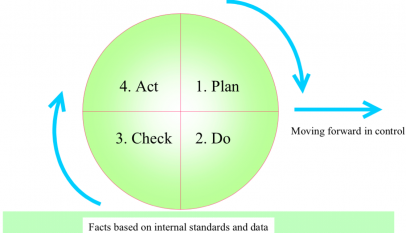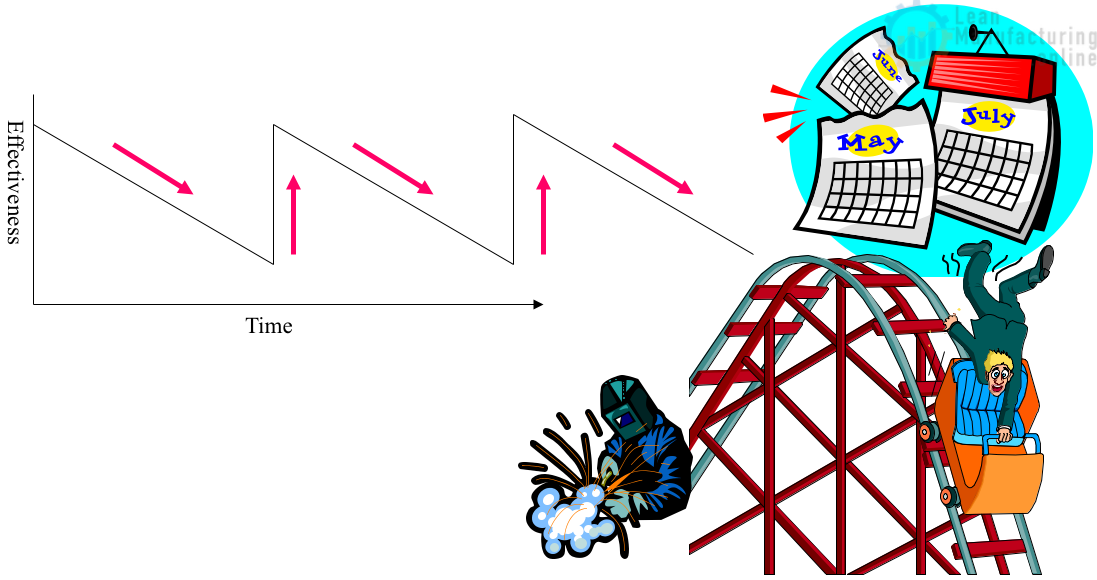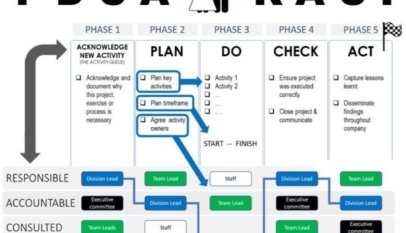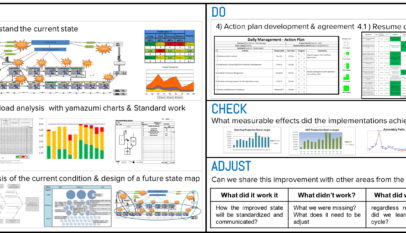Companies must be flexible and open to change to succeed in today’s rapidly changing business world. One practical approach that has benefited many organizations is Kaizen, a Japanese term meaning “continuous improvement.” Taiichi Ohno, the father of the Toyota Production System, popularized the concept by implementing it in his groundbreaking work in the automotive industry (Liker, 2004). This article will explore the meaning of Kaizen, its history, and how businesses can use it to promote innovation and growth.
Understanding Kaizen: Definitions and Origins
Kaizen is a multifaceted term with several interpretations. Some common definitions include:
- Kaizen: Change + improve.
- Kai: To take apart and make new. Zen: To think or become enlightened.
- Kaizen: Continuous improvement using small incremental changes.
- Kaizen: When applied to the workplace, it means continuous improvement involving everyone, managers and workers alike.
The concept of Kaizen originated in Japan and was deeply influenced by the ideas of American quality management experts like W. Edwards Deming and Joseph M. Juran. It gained widespread recognition in the 1980s as a key element of the Toyota Production System (Liker, 2004). Kaizen emphasizes the importance of engaging every individual within an organization, from top management to frontline workers, to achieve ongoing improvements.
The Relevance of Kaizen in Today’s Business World
As Charles Darwin once observed, “It is not the strongest of the species that survive, nor the most intelligent, but the one most responsive to change.” This insight holds true in business, where organizations must continually adapt and innovate to remain competitive. Kaizen provides a framework for fostering a culture of continuous improvement, enabling organizations to navigate the complexities of the modern business environment effectively.
SDCA – The Foundation of Continuous Improvement
Before delving into the Plan-Do-Check-Act (PDCA) cycle, it is essential to understand the Standardize-Do-Check-Act (SDCA) cycle, which serves as the foundation for continuous improvement in Lean organizations. SDCA provides a structured approach to maintaining and stabilizing existing processes before embarking on the journey of improvement.
The SDCA Cycle
- Standardize: Establish best practices and standard operating procedures (SOPs) for a process based on current knowledge and experience. This ensures consistency and repeatability in the process, making it easier to measure and identify areas for improvement.
- Do: Execute the standardized process, following the established SOPs. This step allows for the collection of data and performance metrics to assess the effectiveness of the process.
- Check: Evaluate the process’s performance by comparing the collected data with the expected outcomes. This step helps identify deviations or inefficiencies in the process and opportunities for improvement.
- Act: Address any identified issues and update the SOPs to incorporate the necessary changes. This step enables continuous process refinement, ensuring it remains effective and efficient.
The Kaizen Process: PDCA Cycle
In Lean organizations, management has two primary responsibilities: maintenance and improvement. Maintenance involves standardizing and sustaining processes, while improvement entails advancing processes to higher performance levels. The Kaizen process, closely related to the Plan-Do-Check-Act (PDCA) cycle, is a practical approach to achieving continuous improvement (Imai, 1986). The PDCA cycle consists of the following steps:
- Plan: Establish a target for improvement.
- Do: Implement the plan.
- Check: Determine whether implementation has brought planned improvement.
- Act: Perform and standardize the new procedures to prevent the recurrence of the original problem.
The Relationship between SDCA and PDCA
SDCA and PDCA are closely related, with SDCA often serving as a precursor to the PDCA cycle. When an organization’s performance flatlines or drops after implementing improvements, it is essential to revisit the SDCA cycle to stabilize the process and ensure it is operating consistently. Once the process is stable and standardized, the organization can then proceed with the PDCA cycle to drive further improvements.
In essence, the SDCA cycle focuses on maintaining process stability and control, while the PDCA cycle emphasizes the continuous improvement of processes. By utilizing both cycles in tandem, organizations can create a robust framework for achieving sustainable growth and innovation.
In summary, the Standardize-Do-Check-Act (SDCA) cycle plays a critical role in the continuous improvement journey of Lean organizations. By establishing a stable foundation for processes through standardization and control, organizations can effectively transition to the Plan-Do-Check-Act (PDCA) cycle to foster ongoing innovation and excellence. The combined use of the SDCA and PDCA cycles equips organizations with the tools and mindset necessary to thrive in today’s rapidly changing business landscape.
References
Imai, M. (1986). Kaizen: The key to Japan’s competitive success. McGraw-Hill/Irwin.
Liker, J. K. (2004). The Toyota Way: 14 management principles from the world’s greatest manufacturer. McGraw-Hill.


















